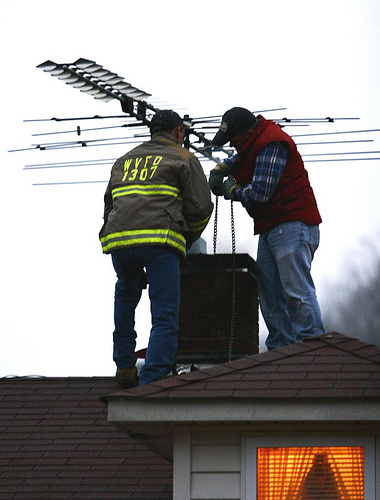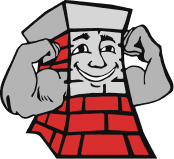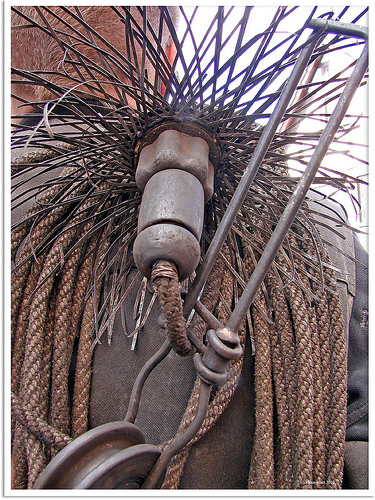What Types of Creosote are in Your Chimney?
Some form of creosote is produced anytime you burn wood in your fireplace. Creosote, tar, and soot are byproducts of wood burning and the mix of the three components is typically called creosote. There are three kinds or stages of creosote, and what is required to clean each type from your chimney is different from the others.
Whatever stage the creosote in your chimney is in, it’s important to have it removed because it’s combustible and can start a chimney fire.
Stage One
Creosote in its first stage or first degree creosote is the easiest to remove from your chimney. It contains a high percentage of soot. This kind of creosote is effectively removed with nothing more than a chimney brush.
Stage one creosote is produced when wood combusts relatively well and the flue is warmed by the heat from the fire. The wood burns well partly because it has plenty of air and partly because it’s seasoned, meaning that it has low moisture content.
Stage Two
Stage Two or second degree creosote is more complicated to remove than the type that contains mostly soot. This type of creosote builds up in glistening black flakes. The flakes are hard and contain hardened tar. Second degree creosote isn’t brushed away as easily as the stage one variety, but it is removable.
An example of a situation in which second degree creosote is built up in the chimney is when there is restriction to the amount of incoming air. It’s fairly common for fireplaces and wood stoves with glass doors to produce this type of creosote.
The best approach to cleaning stage two creosote is to use a rotary loop. This stainless steel piece of equipment is a cable attached to a hub which has metal rods that are turned by a special type of powerful drill.
Stage Three

Creosote buildup creates a tar-like consistency that is highly flammable. Prevent chimney fires with an annual chimney inspection and cleaning.
The most problematic type of creosote is Stage Three or third degree creosote. Cleaning this kind of creosote from your chimney is very difficult, to put it mildly.
Third degree creosote is the result of burning wood when temperatures in the flue are too low and/or the process of combustion is not complete. Any of the following conditions or a combination of them commonly form third degree creosote:
• When the chimney isn’t sufficiently insulated or if it’s cold for some other reason.
• When the house is sealed tight and the fire can’t draw a sufficient amount of air for combustion.
• When unseasoned firewood is burned.
• If the air controls on a wood stove are turned down.
• When the flue is oversized and an improper fit for the appliance.
Stage three creosote is highly concentrated fuel and looks like a coating of tar running down the inside of your chimney. This kind of creosote can form a thick layer as it becomes hardened and is then recoated repeatedly.
When this type of creosote catches fire, it can burn off; but most of the time it takes on the form of a spongy residue, which is easy to remove. If it isn’t burned, removing it is difficult but important. On the other hand, a chimney fire is very dangerous and can cause a house fire.
A chimney liner that’s coated with third degree creosote is often best replaced. But options for removal of the hardened tar-like substance include:
• A rotary head with chains effectively removes third degree creosote, but it’s rarely a chosen method. While the chains do not break flue tiles, if any broken tiles are flushed out in the process, the procedure is usually blamed.
• There are some chemical creosote removers that can sometimes do a fairly good job of removing third degree creosote.
Let our professional chimney sweeps remove the creosote from your chimney, whichever stage it is in. Remember that an annual chimney inspection is recommended by the National Fire Protection Association (NFPA).
Northeastern Chimney, Inc
37 Cody Street, West Hartford, CT 06110
Phone: 860-233-5770



